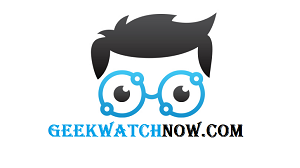Better Data, Better Decisions: The Power of Smart Monitoring
Having accurate and timely information is critical to making smart decisions in business and everyday life. Decisions based on poor quality data can have serious consequences and negatively impact outcomes, but with access to good information from reliable sources, people and organizations can more effectively plan, take action, and measure success. The quality of data directly influences the confidence level of decision-makers and their ability to navigate complex challenges with precision.
Monitoring Key Processes with Technology
In the modern world, monitoring key processes has been made vastly easier and more powerful thanks to advancing technology. With the rise of data-gathering sensors, connectivity, computers, and analytics, important systems can be tracked in real-time, and the data can be translated into usable business intelligence. This developing capability is commonly called the “Internet of Things” or IoT. The integration of artificial intelligence and machine learning has further enhanced these monitoring capabilities, enabling predictive analytics and autonomous system optimization.
Indeed, the experts at Blues.com explain that IoT solutions leverage networked smart sensors and devices to feed important data back to centralized software platforms. The incoming data provides up-to-date visibility into operations and events. Sophisticated analytics examine trends and abnormalities, identify issues, send alerts, and support faster decisions. With an IoT approach, tracking metrics, spotting problems early, and continuously fine-tuning processes becomes more automated and responsive. These systems can also adapt to changing conditions and learn from historical patterns to improve their accuracy over time.
Manufacturing Optimization
In manufacturing, IoT monitoring helps assess operating efficiency of equipment and production lines in granular detail. Management can identify lags, breakdowns, and quality issues as they occur. This permits quicker corrections that minimize costly downtime and defects. Advanced IoT systems can even automatically adjust production parameters in real-time to maintain optimal performance and quality standards.
Fleet and Logistics Management
In transportation operations, IoT tracking allows fleet managers to monitor trucks, vans, ships and aircraft as they transport goods and people. Vehicles can be tracked in real-time to observe metrics like speed, direction, and operating conditions. Logistics leaders can better coordinate routes, loading, and schedules to optimize the flow of cargo. Unexpected delays because of weather, traffic or mechanical issues can be immediately adapted to. Integrating IoT data with weather forecasting and traffic systems enables proactive route optimization and risk mitigation.
Agriculture Insights
For farmers, IoT systems measure and analyze data about crops, soil, equipment, storage facilities, and livestock. Monitoring different agricultural assets continuously means farm owners can boost yields, conserve resources, and maximize sustainability. Over longer timeframes, the data help determine optimal growing and harvesting patterns. Smart agriculture systems can also integrate with market data to help farmers make better decisions about when to plant and harvest based on predicted demand and pricing trends.
The Promise of Connected Decision Making
As networked monitoring and analytics penetrate more fields, the insights produced will multiply exponentially. This will assist individuals and groups in making timely calls that shape better outcomes. With the capacity to regularly measure key indicators at scale, hidden patterns and opportunities will emerge to guide wiser plans of action. The democratization of data through IoT platforms enables collaborative decision-making across organizations and industries.
Conclusion
The data flows of an IoT world represent a shifted paradigm where information is abundant, accessible and shareable. This future of interconnected decision making can drive new breakthroughs and innovations across all aspects of business and culture. As these systems continue to evolve, they will increasingly enable predictive and prescriptive analytics that not only inform decisions but also suggest optimal courses of action based on comprehensive data analysis.

